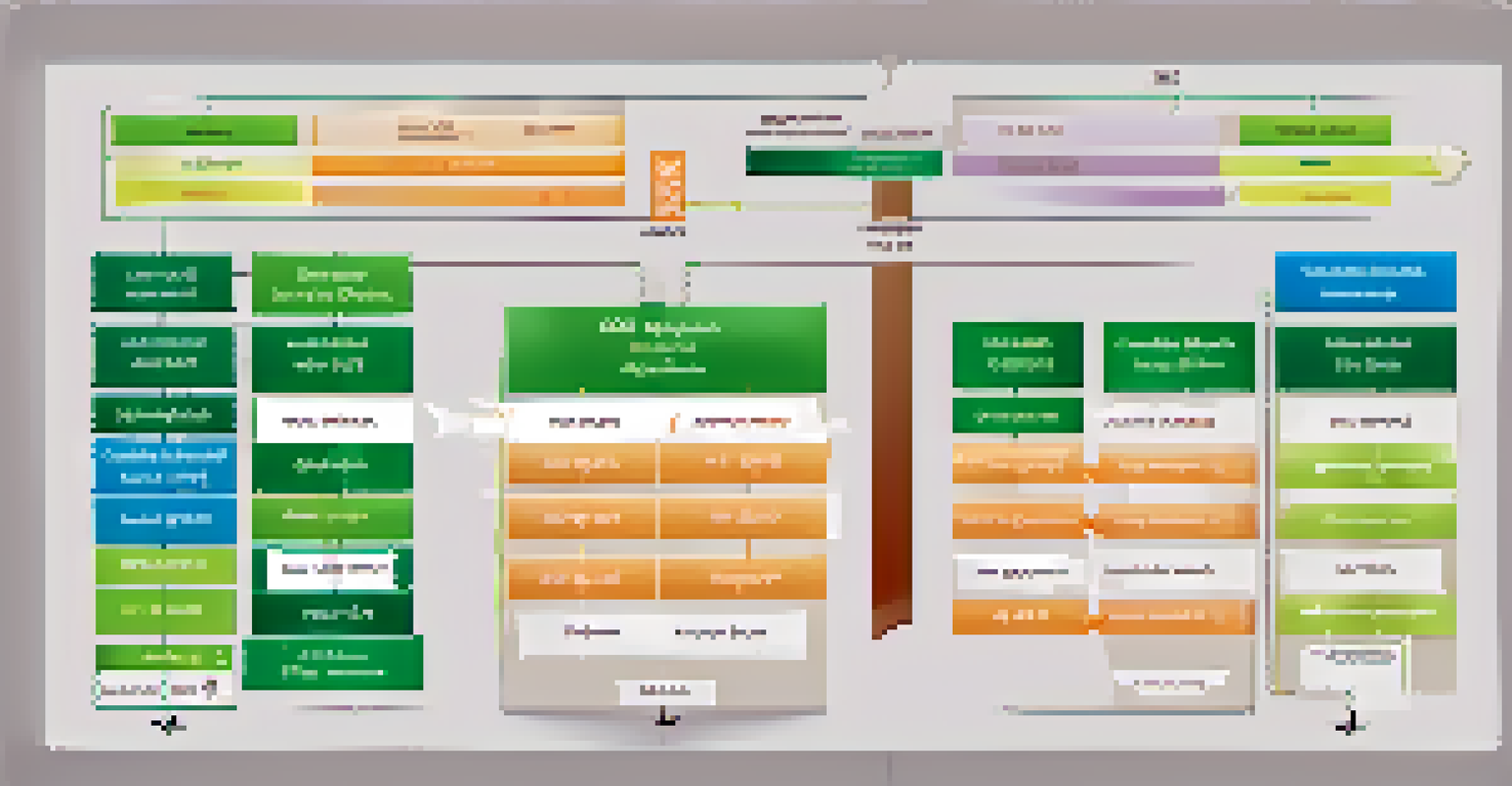How to Exercise Stock Options: A Step-by-Step Guide

Understanding Stock Options: What They Are
Stock options are contracts that give you the right to buy shares of a company's stock at a predetermined price, known as the exercise price. They are often offered as part of employee compensation packages, allowing you to benefit from the company's growth. Understanding how stock options work is crucial for making informed financial decisions.
In investing, what is comfortable is rarely profitable.
When you exercise stock options, you’re essentially converting these options into actual shares of stock. This can be a great way to build wealth if the company's stock price increases above the exercise price. However, it’s important to remember that stock options can also carry risks, especially if the stock price doesn’t perform as expected.
In essence, stock options can be seen as a bet on the future success of a company. If you're confident in the company's direction, exercising your options might be a smart move. However, it's always wise to do your research and consider the financial implications.
Types of Stock Options: Incentive vs. Non-Qualified
There are two primary types of stock options: Incentive Stock Options (ISOs) and Non-Qualified Stock Options (NSOs). ISOs typically offer favorable tax treatment, but they come with specific requirements that need to be met. On the other hand, NSOs are more flexible but usually don't provide the same tax benefits.

When considering which type of stock option you're dealing with, it's essential to understand how each type affects your tax situation. For instance, exercising ISOs may lead to alternative minimum tax (AMT) implications, while NSOs are taxed as ordinary income upon exercise. This distinction can significantly impact your financial planning.
Stock Options Explained Simply
Stock options give you the right to buy company shares at a set price, potentially benefiting from the company's growth.
Ultimately, understanding the differences between these two types helps you make more informed decisions about exercising your options. Knowing the tax implications can save you money and prevent unexpected surprises come tax season.
The Importance of Timing When Exercising Options
Timing is crucial when it comes to exercising stock options. Exercising too early can mean missing out on potential gains, while waiting too long might lead to losing value if the stock price falls. Finding the right moment requires a balance between your financial goals and market conditions.
Risk comes from not knowing what you're doing.
Market trends and the company's performance should guide your decision. If the stock price is consistently rising, waiting to exercise your options could yield better returns. Conversely, if you see signs of a downturn, exercising sooner might protect your investment.
Additionally, personal financial circumstances should also play a role in your timing strategy. If you need cash for an immediate expense, exercising your options might make sense even if it’s not ideal from a market perspective.
Step 1: Review Your Stock Option Agreement
Before exercising your stock options, it's crucial to review the terms outlined in your stock option agreement. This document details the number of options you have, the exercise price, and the expiration date. Understanding these elements will help you make informed decisions about exercising your options.
Take note of any vesting schedules that may apply, as you can only exercise options that have vested. Vesting is a process that gradually grants you ownership of your options over time, typically based on your length of employment. Knowing your vesting schedule can influence your timing and strategy.
Understand Tax Implications
Knowing the differences between Incentive and Non-Qualified Stock Options can significantly impact your tax situation.
Additionally, familiarize yourself with any potential fees associated with exercising your options. Some companies may charge transaction fees or have specific requirements that could impact your overall cost. Being well-informed can save you surprises later on.
Step 2: Calculate Your Total Costs
Next, it's important to calculate the total costs involved in exercising your stock options. This includes the exercise price multiplied by the number of options you're planning to exercise, plus any applicable taxes and fees. Having a clear understanding of these costs will help you prepare financially.
For example, if you have 100 options with an exercise price of $10 each, you’ll need to come up with $1,000 just to exercise them. Additionally, consider the potential tax implications that can arise from exercising your options, as they can add to your overall cost.
By accurately calculating your total costs, you can make better decisions about whether to proceed with exercising your options. It’s a vital step in ensuring that you don’t overextend yourself financially.
Step 3: Choose How to Exercise Your Options
When it comes to exercising your options, you typically have a few methods to choose from. The most common options include cash exercise, cashless exercise, and stock swap. Each method has its own pros and cons, so it’s important to choose the one that aligns with your financial situation and goals.
A cash exercise requires you to pay the exercise price upfront, which can be straightforward but might not be feasible for everyone. On the other hand, a cashless exercise allows you to sell some of the shares immediately to cover the cost, minimizing your out-of-pocket expense. This can be an attractive option if you want to avoid upfront costs.
Timing is Key for Exercising Options
Finding the right moment to exercise stock options balances market conditions and your personal financial goals.
Finally, a stock swap allows you to use shares you already own to pay for the new shares, which might be a great way to leverage existing investments. Assessing these methods can help you optimize your exercise strategy based on your current financial landscape.
Step 4: Execute the Exercise Process
Once you've made your calculations and chosen your exercise method, it's time to execute the process. This typically involves submitting a request to your company's stock plan administrator or using an online platform provided by your employer. Ensure that you follow the necessary procedures to avoid any delays or complications.
During this step, you may need to provide information such as the number of options you wish to exercise and your chosen payment method. It's essential to complete this step accurately and promptly, as there are often deadlines related to exercising options, particularly as they approach expiration.

After your request is processed, you’ll receive confirmation of your exercised options. Take time to review the details to ensure everything is correct, as this is an important step in securing your investment.